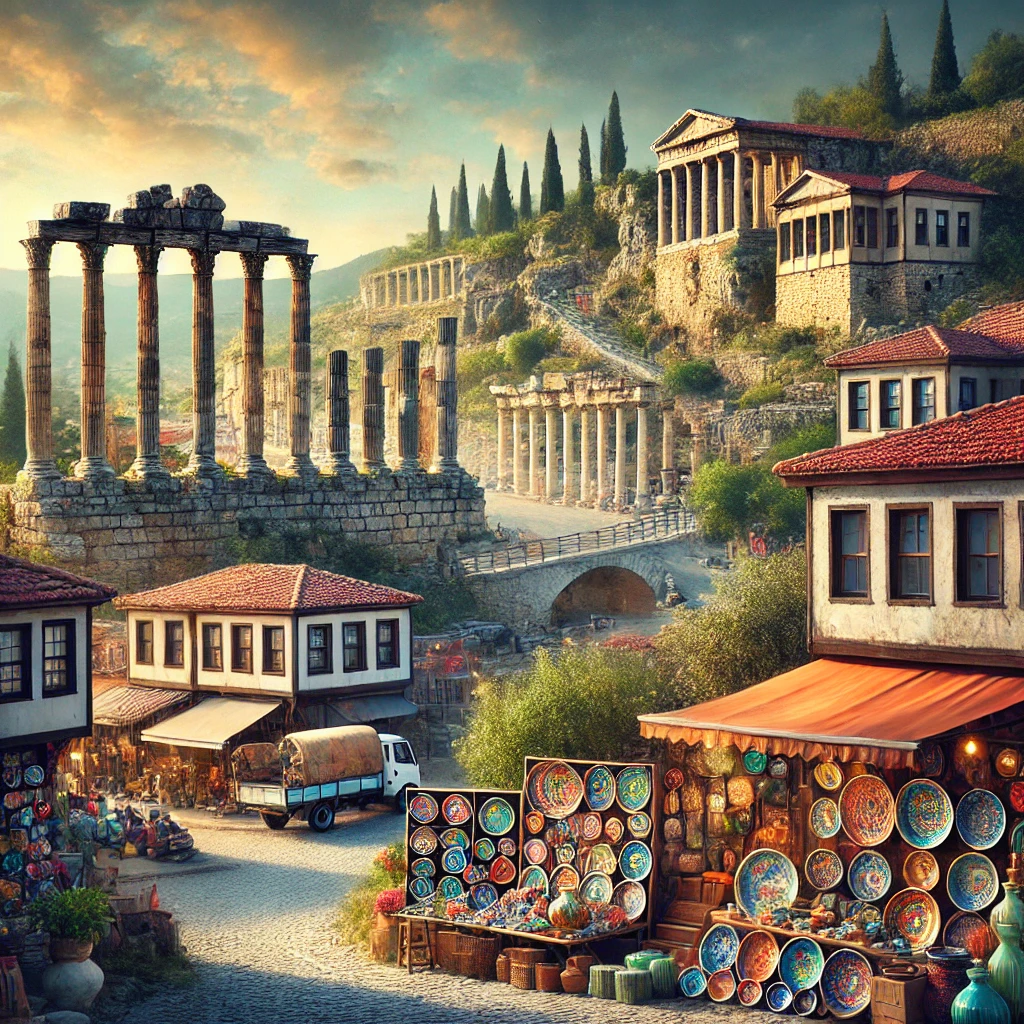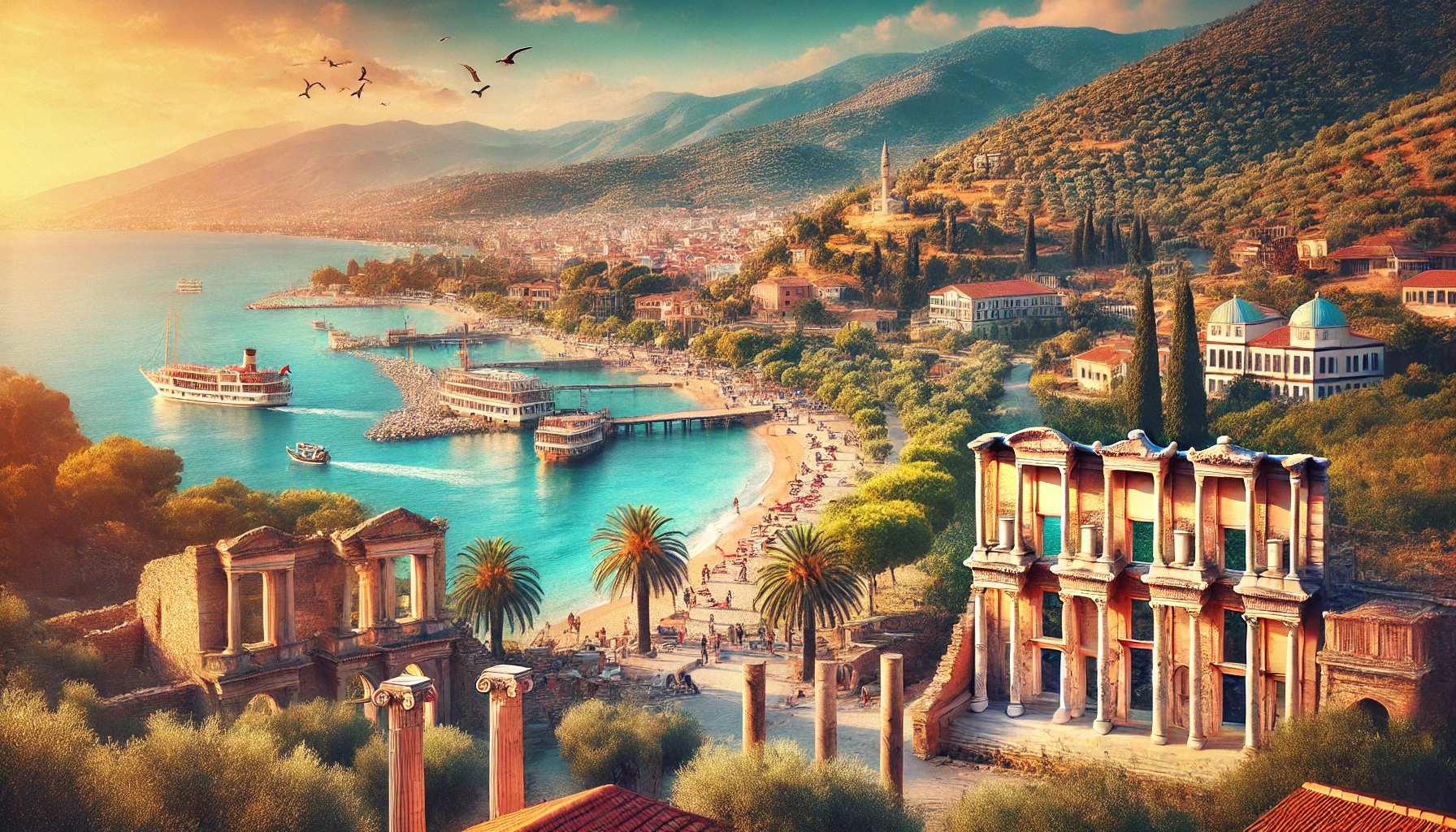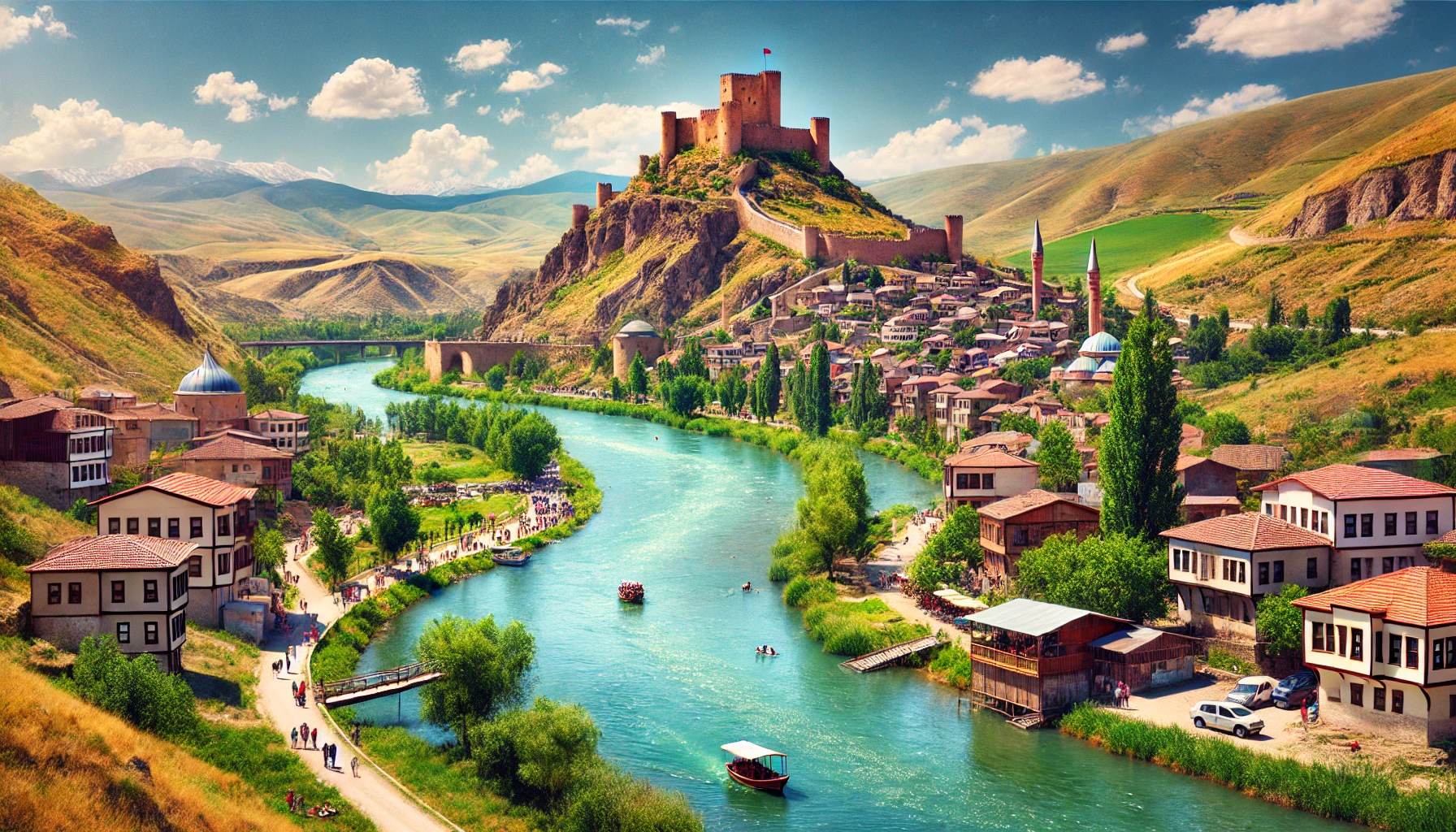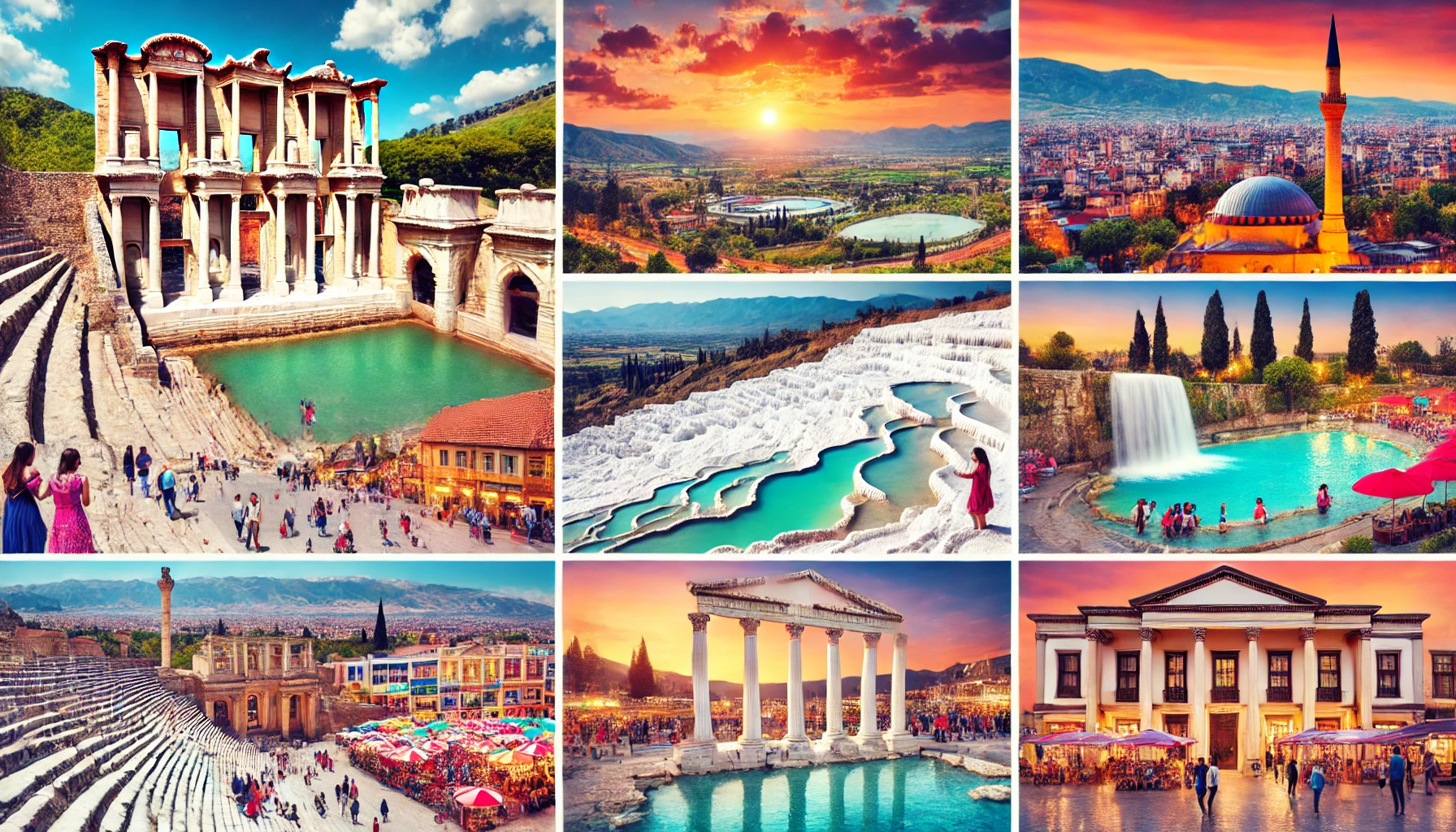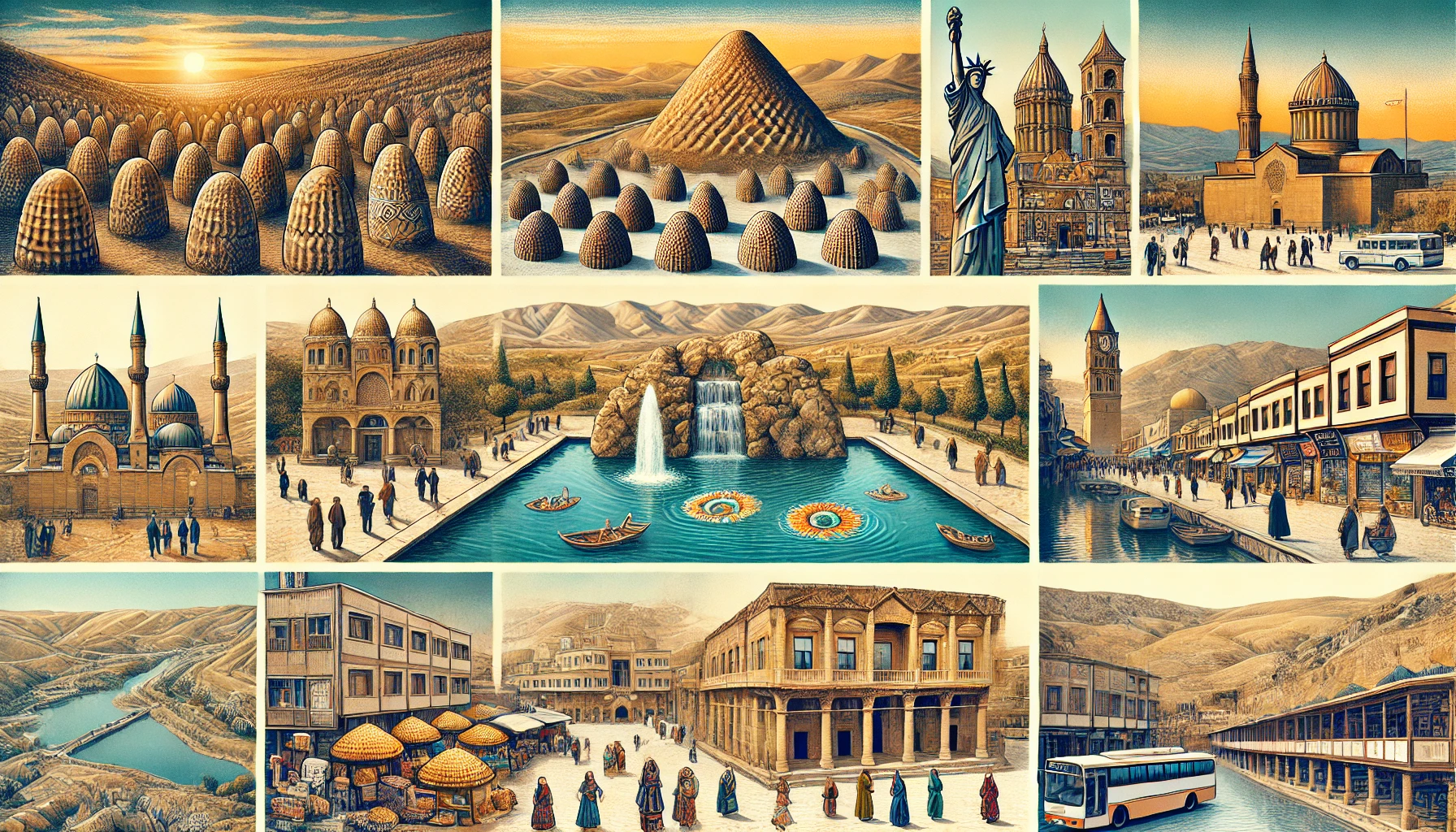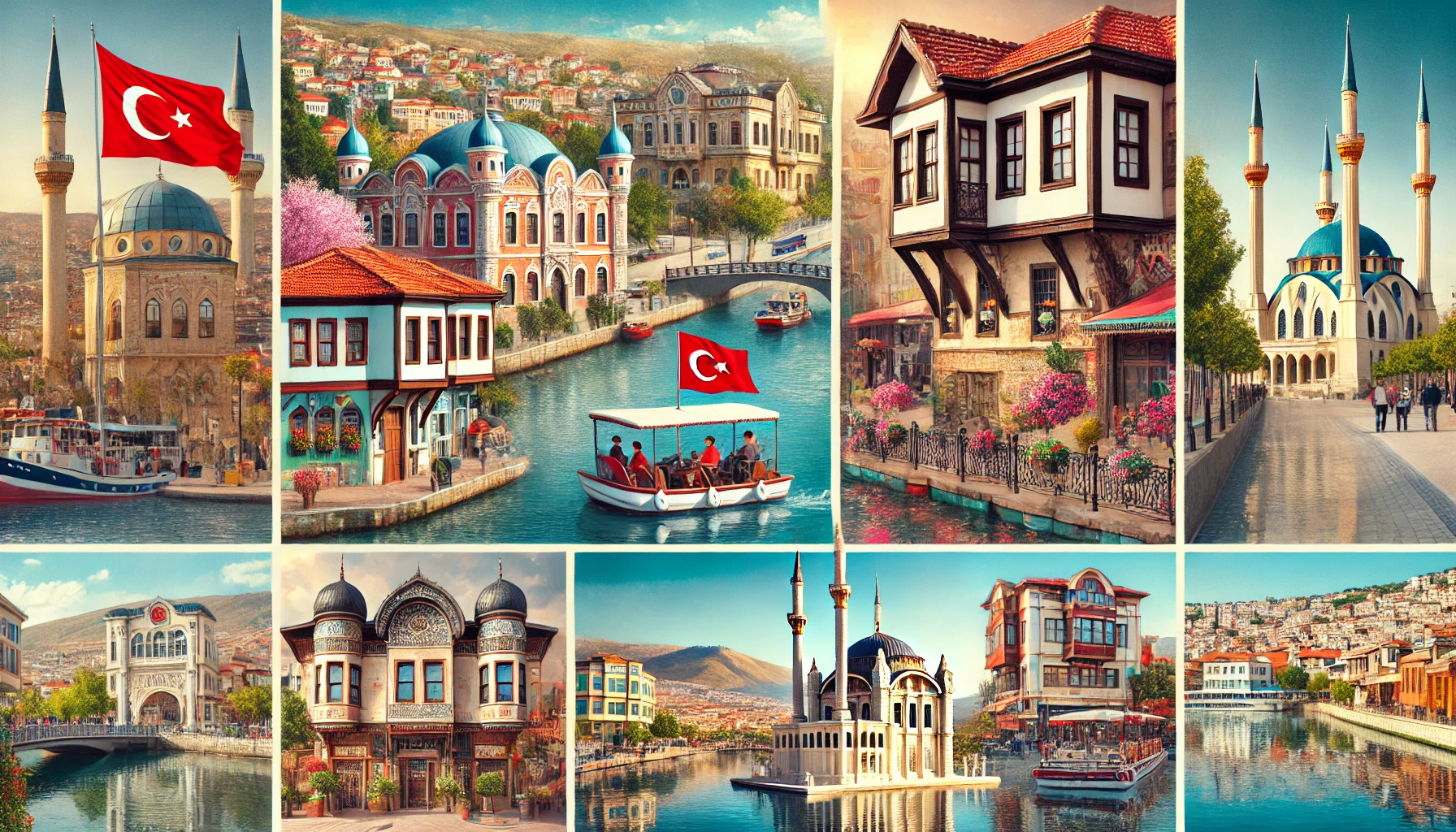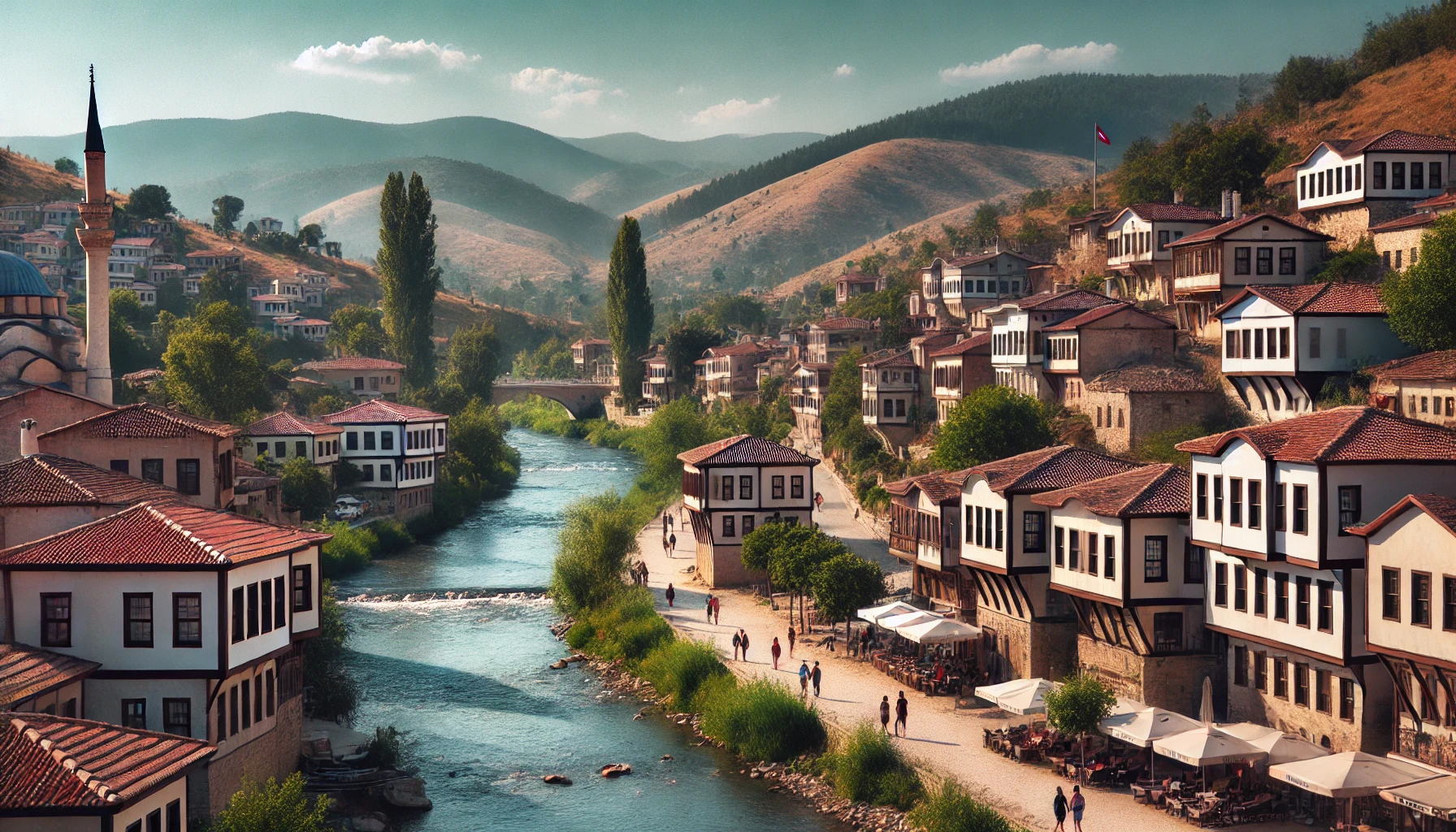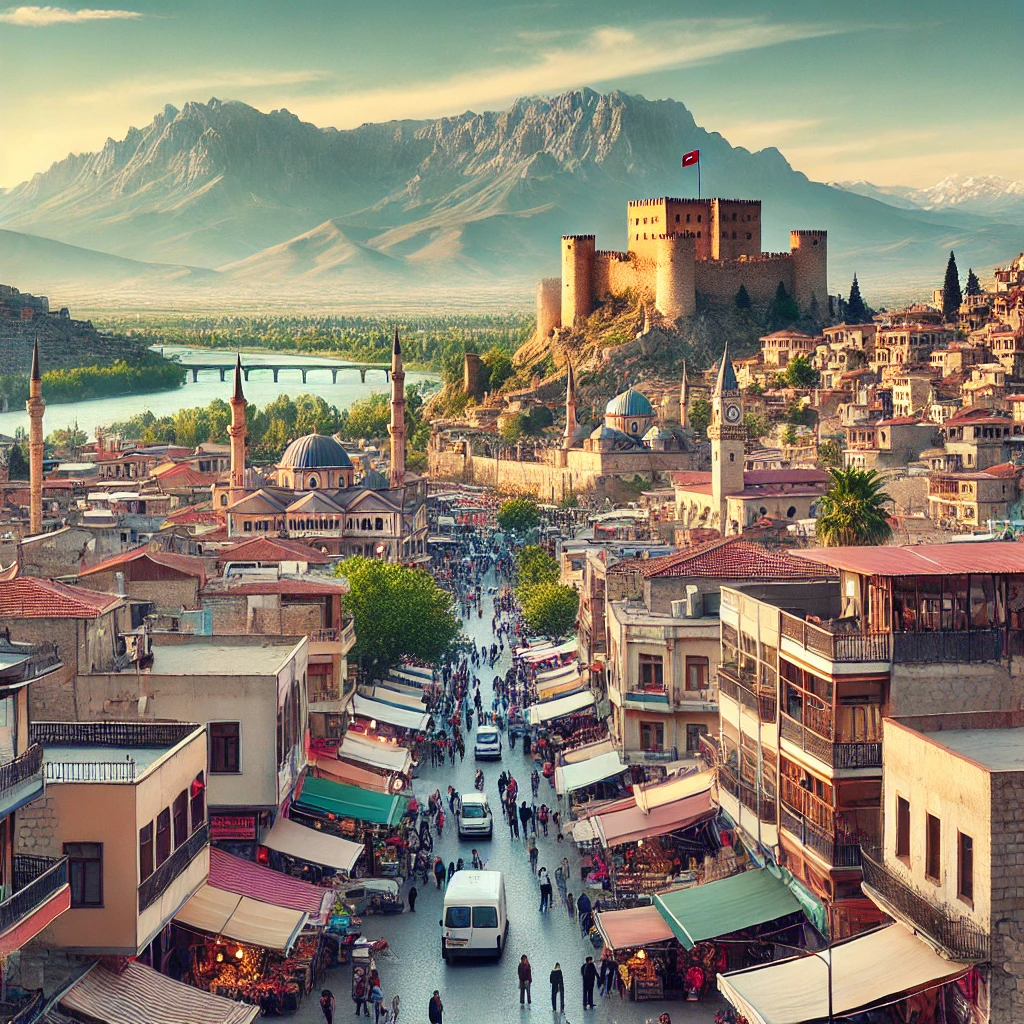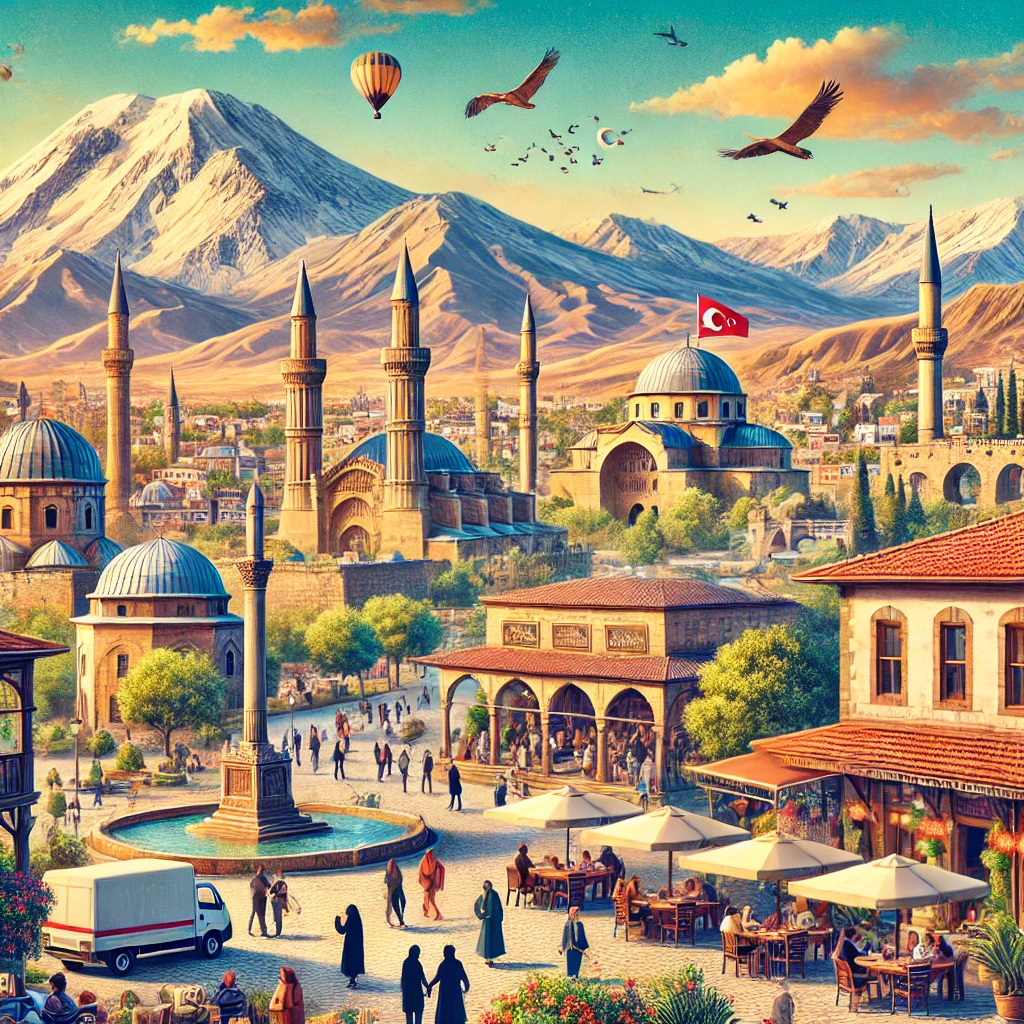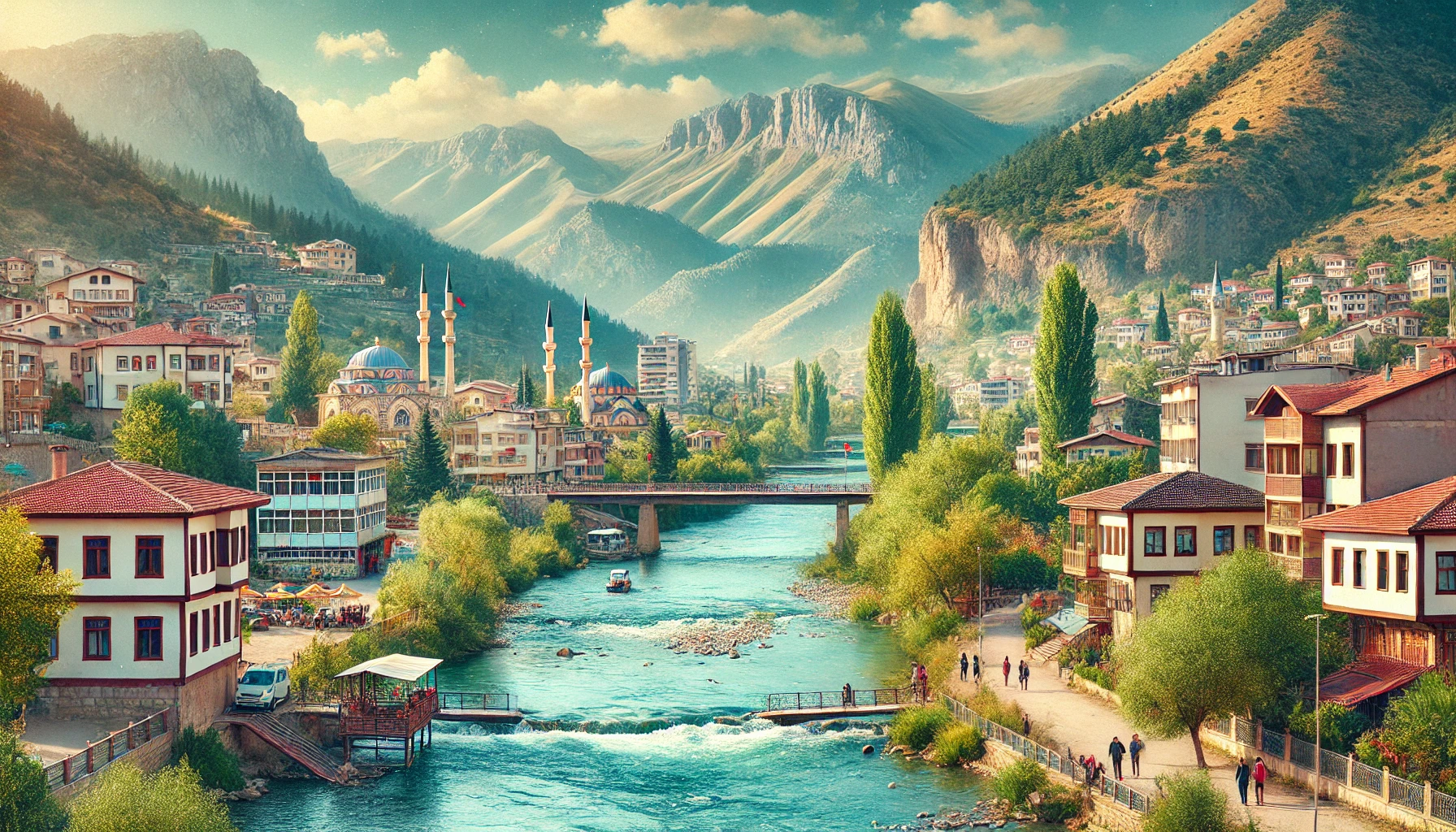Discover Kütahya: A Hidden Gem in Western Turkey
Nestled in the western part of Turkey, Kütahya is a city that embodies a rich tapestry of history, culture, and natural beauty. Located on the banks of the Porsuk River at an elevation of 969 meters above sea level, Kütahya offers a unique blend of ancient ruins, vibrant ceramics, and picturesque landscapes. This city, with a population of approximately 263,863 as of 2022, is the seat of Kütahya Province and Kütahya District. For travel enthusiasts seeking an off-the-beaten-path destination, Kütahya promises an unforgettable experience.
A Glimpse into History
Ancient Greece, Rome, and Byzantium
Kütahya, historically known as Cotyaeum, has a storied past that dates back to ancient times. The city was part of the Roman province of Phrygia Salutaris and later became the capital of the new province of Phrygia Salutaris III around 820 AD. This rich historical backdrop is evident in the ancient ruins scattered throughout the region.
One of the most significant sites is the ancient city of Aizanoi, which boasts impressive structures such as the Temple of Zeus. Visitors can also explore the Kütahya Archaeological Museum, home to artifacts like the Amazon Sarcophagus, showcasing the city’s deep-rooted historical significance.
Church History
In the Byzantine era, Kütahya was an important ecclesiastical center. It transitioned from being a suffragan of Synnada to a metropolitan see. Notable bishops from this period include Domnius, who attended the Council of Ephesus in 431, and Marcianus, who participated in the Council of Chalcedon in 451. The city’s religious heritage is further exemplified by its fortifications, including a double-line of walls and citadel constructed under Emperor Justinian I.
Seljuk, Crusader, and Ottoman Periods
Throughout the centuries, Kütahya changed hands several times, reflecting the region’s turbulent history. It was captured by the Seljuk Turks in the 11th century, later recaptured by the Byzantines, and eventually incorporated into the Ottoman Empire in 1428. During the Ottoman period, Kütahya became a renowned center for ceramic production, a craft that continues to thrive today.
The Legacy of Armenian Ceramics
The Rise of Ceramic Art
Kütahya’s reputation for ceramic art began with the settlement of Christian Armenians in the city. These artisans brought their expertise in tile-making and ceramic-ware production, contributing to Kütahya’s emergence as a hub for Ottoman ceramics. The Armenian ceramicist David Ohannessian played a pivotal role in this tradition, eventually taking his craft to Jerusalem.
Continuing the Tradition
Today, the legacy of Kütahya’s Armenian ceramics lives on through the Balian and Karakashian families in East Jerusalem. Their studios, particularly the Armenian Ceramics-Balian, are renowned for their exquisite tile murals, showcasing the enduring artistry of Kütahya’s ceramic heritage.
Exploring Kütahya’s Architectural Marvels
Fortifications and Ruins
Kütahya’s fortifications, built and rebuilt from antiquity through the Ottoman period, are vital to understanding the city’s historical significance. The cityscape is dotted with remnants of ancient walls, citadels, and Byzantine churches. These structures not only provided security but also contributed to the region’s economic prosperity.
Ottoman Houses and Historical Mosques
Strolling through Kütahya’s old neighborhoods, visitors can admire traditional Ottoman houses made of wood and stucco. Germiyan Caddesi is particularly notable for its well-preserved examples. The city also boasts several historical mosques, including Ulu Camii, Cinili Camii, Balikli Camii, and Donenler Camii, each offering a glimpse into the architectural splendor of the past.
The Cultural Fabric of Kütahya
Museums and Cultural Centers
Kütahya’s cultural landscape is rich with museums and cultural centers that celebrate its diverse heritage. The Kütahya Museum showcases a fine collection of arts and cultural artifacts, while the house where Hungarian statesman Lajos Kossuth lived in exile between 1850 and 1851 is preserved as a museum. These institutions provide valuable insights into the city’s historical and cultural evolution.
Traditional Crafts and Industries
Kütahya’s industries have deep historical roots, particularly in kiln products such as tiles and pottery. The city is famous for its glazed and multicolored ceramics, a tradition that dates back to ancient times. Modern industries in Kütahya include sugar refining, tanning, nitrate processing, and meerschaum products. The agricultural sector is also vital, with local farms producing cereals, fruits, and sugar beet.
Natural Beauty and Climate
Scenic Landscapes
Kütahya is surrounded by gentle slopes and high mountain ridges, offering a picturesque setting for outdoor enthusiasts. The region’s natural beauty is complemented by its warm-summer Mediterranean climate, characterized by chilly, wet winters and warm, dry summers. Visitors can enjoy year-round activities, from hiking in the mountains to exploring the lush agricultural lands.
Climate Overview
Kütahya experiences a temperate continental climate with significant seasonal variations. The highest recorded temperature is 41.4°C (106.5°F) in August 2023, while the lowest is -28.1°C (-18.6°F) in December 1948. Precipitation is mostly observed during winter and spring, contributing to the region’s fertile landscape.
Modern Kütahya: Education and Transportation
Kütahya Dumlupınar University
Education plays a crucial role in modern Kütahya, with the Main Campus and Germiyan Campus of Kütahya Dumlupınar University located in the city. The university offers a range of programs and facilities, contributing to the intellectual and cultural vibrancy of the region.
Transport Links
Kütahya is well-connected by rail and road, making it easily accessible from major Turkish cities. The main bus station offers links to destinations across Turkey, while Zafer Airport serves as the primary gateway for air travel. Additionally, Kütahya is the main railroad endpoint for the Aegean region, facilitating convenient travel for visitors.
Culinary Delights and Local Cuisine
Traditional Dishes
Kütahya’s culinary scene is a delightful blend of traditional Turkish flavors and local specialties. Visitors can savor dishes such as keşkek (a wheat and meat stew), mantı (Turkish dumplings), and gözleme (stuffed flatbread). The city’s markets and restaurants offer a wide array of culinary experiences that reflect its rich cultural heritage.
Local Markets
Exploring Kütahya’s local markets is a must for food enthusiasts. These vibrant marketplaces are filled with fresh produce, spices, and traditional snacks. Visitors can immerse themselves in the local food culture, sampling a variety of flavors and ingredients unique to the region.
Festivals and Events
Cultural Celebrations
Kütahya hosts several festivals and events throughout the year, celebrating its cultural and historical heritage. The International Germiyan Festival is a highlight, featuring performances, exhibitions, and traditional crafts. These events provide an opportunity for visitors to engage with the local community and experience the city’s vibrant cultural life.
Religious Observances
Religious festivals and observances are an integral part of Kütahya’s cultural fabric. The city’s mosques and religious sites play a central role in these celebrations, offering visitors a chance to witness the spiritual traditions of the region.
Visiting Kütahya
Travel Tips
When planning a visit to Kütahya, it’s essential to consider the best times of the year to experience the city’s diverse attractions. Spring and autumn are ideal for pleasant weather and outdoor activities. Visitors should also explore local accommodations, ranging from boutique hotels to traditional guesthouses, to find the perfect place to stay.
Key Attractions
Some of the must-visit attractions in Kütahya include the ancient city of Aizanoi, the Kütahya Archaeological Museum, and the traditional Ottoman houses along Germiyan Caddesi. The city’s fortifications, historical mosques, and ceramic workshops offer a rich and varied itinerary for travelers.
Conclusion
Kütahya is a hidden gem that offers a captivating blend of history, culture, and natural beauty. From its ancient ruins and vibrant ceramics to its scenic landscapes and rich culinary traditions, Kütahya promises an enriching travel experience for enthusiasts of all kinds. For those looking to explore Turkey beyond the usual tourist spots, Kütahya is a destination that should not be missed.
Discover more about this fascinating city and plan your visit by exploring resources and guides available at visitturkey.in. Travel Turkey and uncover the treasures of Kütahya!
Latest Update: Aug 4, 2024
Your Content Goes Here
TAGS: ancient city Kütahya, Kütahya, Kütahya archaeological sites, Kütahya attractions, Kütahya ceramics, Kütahya climate, Kütahya culture, Kütahya education, Kütahya festivals, Kütahya history, Kütahya landscapes, Kütahya local cuisine, Kütahya museums, Kütahya natural beauty, Kütahya tourism, Kütahya transport, Kütahya travel guide, Kütahya Turkey, Ottoman Kütahya, travel Kütahya, visit Kütahya
The Region of Kütahya
A brief summary of the key points in this article.
Latest Travel Guides
Weather Today in Kütahya, Turkey
Location: Kütahya Province
Temperature: 0.48°C
Condition: Clear sky

